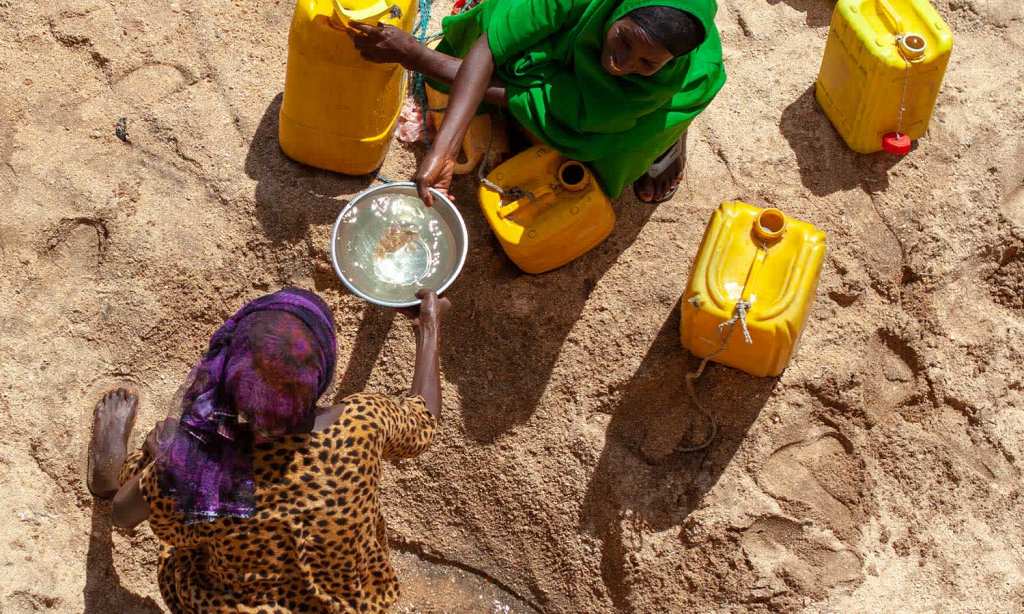In her first column for The Latch, Natalie Kyriacou discusses the reasons why climate change is a gender issue. Kyriacou is the CEO and Founding Director of My Green World — a Melbourne-based social enterprise dedicated to addressing global wildlife and environmental challenges through innovative, youth-focused education.
When climate-related events occur — as they are with increasing frequency — it’s the world’s women who suffer most. Below, I’m outlining the five ways climate change disproportionately affects women.
1. Climate change affects the world poor, and the world poor are women
As climate change intensifies, it is the world’s poorest and most marginalised populations that are left vulnerable. These groups often have climate-sensitive livelihoods (ie. depending on agriculture) with limited resources and infrastructure in place to adapt to the shocks of climate change.
Globally, women are more likely to live in poverty than men, placing them at the epicentre of the climate crisis. In fact, and according to the UN, women aged 25-34 globally are 25% more likely than men to live in extreme poverty.
2. Socially constructed gender roles and responsibilities exacerbate existing vulnerabilities
Structural biases mean that women’s lives are directly and overwhelmingly affected by the changes brought about by climate change. Women and girls — particularly rural and indigenous — carry a disproportionate burden of unpaid care and domestic work, and are often responsible for gathering and producing food, collecting water and sourcing fuel for heating and cooking.
Women and girls are responsible for water collection in 80% of households without access to piped water. Climate-induced events, such as drought, affects the time and effort required to collect, secure, distribute and store resources required for home labour, such as water and fuel.
Collectively, women around the world spend 140 million hours per day collecting water for their families and communities.
3. Climate crisis exposes women to increased risks of violence, sexual and domestic abuse, trafficking and conflict
Climate change is considered a “threat multiplier”. This phenomenon describes the complex relationship between climate change and other risks. Felt widely by women, the “threat multiplier” intersects with other factors to aggravate vulnerabilities.
The World Health Organization (WHO) reports that violence against women increases dramatically in the aftermath of a natural disaster due to the increase in traumatic stress, scarcity of basic supplies, and destruction of authoritative systems.
In the wake of Hurricane Katrina, the Louisiana Coalition Against Domestic Violence received reports that women were “being battered by their partners in the emergency shelters”. Similarly, in Vanuatu, the Tanna Women’s Counselling Centre reported a 300% increase in new domestic violence cases after two tropical cyclones hit Tafe Province in 2011.
4. Climate change impacts women’s health disproportionately
There are many ways in which climate change impacts health; from poor air quality and extreme weather events to reduced water quality and disruption to food security. While climate change can create hardships for everyone, on average it kills more women than men.
Biological factors mean that pregnant and breastfeeding women, with their unique nutritional needs, are particularly vulnerable. In South and South-East Asia, 45–60% of women of reproductive age are underweight and 80% of pregnant women have iron deficiencies.
Such a poor nutritional status can determine a person’s ability to cope with the effect of climate disaster. Socially constructed gender roles also place women’s health at risk. For example, in India, women spend more time in their homes and have been exposed to pollution from carbon-monoxide producing indoor stoves used for cooking and heating.
5. Women are excluded from climate decision-making forums
Although women are forced to bear the brunt of the consequences of climate change, they have been systematically excluded from decision-making mechanisms and denied agency in deciding when and how to overcome the vulnerabilities they face.
According to UN Women, globally, only 6.6% of women are Heads of State and 6.2% are Heads of Government. Women make up just 20.5% of speakers of parliament and 25.3% of deputy speakers of parliament. Women are underrepresented across all leadership spaces.
—
Women are the most affected by climate change, and yet, are prevented from meaningfully contributing to climate change mitigation efforts.
Drawing on women’s experiences, knowledge and skills and supporting their empowerment may well be the first step in addressing climate change.







